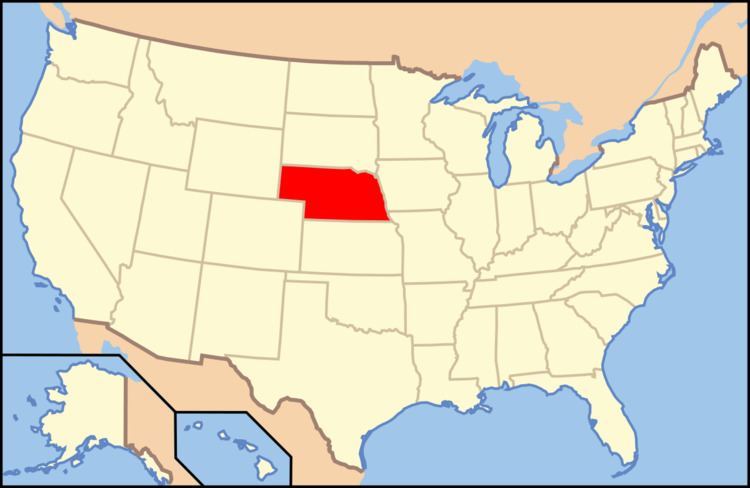Year established 1867 | ||
 | ||
Years of wine industry 1870s – 1910s, 1994 – present Total area 77,421 sq mi (200,519 km) | ||
Nebraska wine country through my eyes
Nebraska wine is wine made from grapes grown in the U.S. state of Nebraska. Nebraska's oldest winery was founded in 1994, and about twenty commercial wineries operate across the state. The vast majority of these wineries are small and sell most of their wine to tourists who visit the winery in person. The University of Nebraska–Lincoln has a program in viticulture. There are no designated American Viticultural Areas in Nebraska.
Contents
Grapes grown
Nebraska's climate, with its long, hot summers, cold winters, and wide seasonal variations in precipitation and humidity limits the ability to grow European grape varieties. Most Nebraska grapes are French-American hybrids and American varieties; varieties commonly grown include Edelweiss, La Crosse, St. Croix, and Vignoles.
Nebraska's grape growers continue to introduce and develop new varieties. In 2006, Whisky Run Creek Vineyard of Brownville produced the state's first Riesling. In the late 1990s, Cuthills Vineyards of Pierce began a breeding program to create European-style red wines by crossbreeding Spanish and French grapes with wild grapes native to Nebraska. The Temparia variety is the first grape derived from this breeding program to be used in a wine.
History
The wine and grape industry in Nebraska began in the late 19th century, by the end of which 5,000 acres (2,000 ha) of grapes were in production, with most vineyards located in the counties of southeastern Nebraska adjacent to the Missouri River. The Nebraska wine industry was devastated in the 1910s by Prohibition; after the repeal of Prohibition in 1933, the remaining commercial grape industry in Nebraska was destroyed by a storm in November 1940.
The wine and grape industry in Nebraska was dormant until the mid-1980s; the passage of the Nebraska Farm Wineries Act by the Nebraska Legislature in 1986 increased the amount of wine that a Nebraska winery could produce from 200 US gallons (760 L) to 50,000 US gallons (189,000 L). Even in the early 1990s, fewer than 10 acres (4 ha) of vineyards were in cultivation in the state.
The first winery in Nebraska since Prohibition, Cuthills Vineyard [1] in Pierce, opened on 1994-12-17. The second winery in Nebraska, James Arthur Vineyards, opened in 1997. Since then, 15 additional wineries have opened, with most located near Omaha and Lincoln.
Nebraska wineries have gained national recognition for their wine. In 2006 Soaring Wing's "Dragons Red" was awarded the title of "best hybrid red" in the Best Of The East competition which pools wineries East of the Rockies. And since then they have garnered over 120 awards, including multiple Double Golds, in various national and international competitions.
